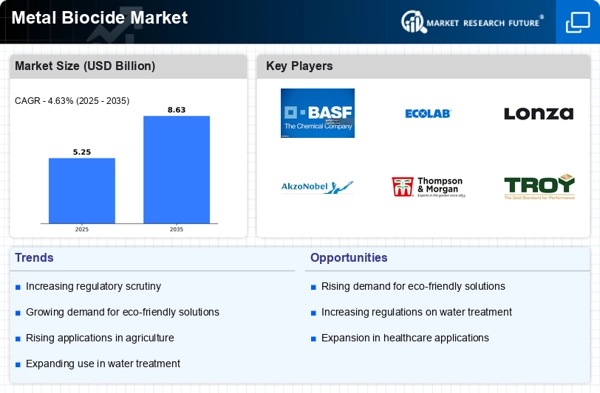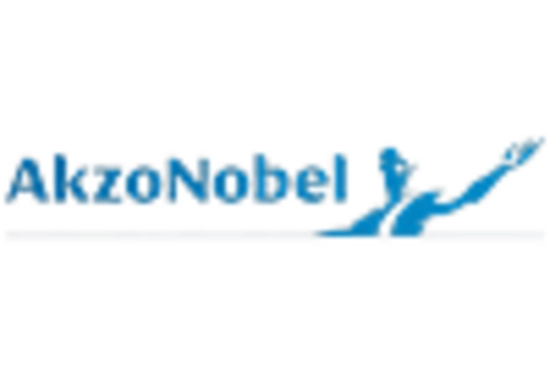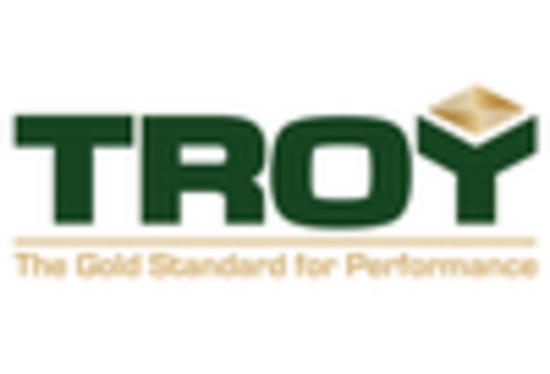Increasing Regulatory Support
The Metal Biocide Market appears to benefit from increasing regulatory support aimed at ensuring public health and environmental safety. Governments are implementing stringent regulations regarding the use of biocides, which encourages manufacturers to adopt metal biocides that are effective yet compliant with safety standards. This regulatory framework not only promotes the use of safer biocidal products but also drives innovation within the industry. As a result, the market is likely to witness a surge in demand for metal biocides that meet these evolving regulations, potentially leading to a market growth rate of around 5% annually over the next few years.
Rising Awareness of Health Risks
The Metal Biocide Market is likely to see growth driven by rising awareness of health risks associated with microbial contamination. As consumers become more informed about the potential dangers posed by bacteria and viruses in various environments, there is an increasing demand for effective biocidal solutions. Metal biocides, known for their antimicrobial properties, are being adopted in sectors such as healthcare, food processing, and water treatment. This heightened awareness is expected to propel the market forward, with projections suggesting a compound annual growth rate of around 6% in the coming years as industries seek to mitigate health risks through the use of metal biocides.
Growth in the Construction Sector
The Metal Biocide Market is poised for growth due to the expansion of the construction sector. Metal biocides are increasingly used in construction materials to prevent microbial growth and enhance durability. As urbanization continues to rise, the demand for construction materials treated with metal biocides is expected to increase. Recent estimates suggest that the construction industry could contribute to a 25% increase in the demand for metal biocides over the next five years. This trend indicates a robust opportunity for manufacturers to cater to the construction sector, thereby driving overall market growth.
Expanding Applications in Agriculture
The Metal Biocide Market is experiencing a notable expansion in applications within the agricultural sector. Metal biocides are increasingly utilized for pest control and crop protection, as they offer effective solutions against various pathogens and pests. The rising need for sustainable agricultural practices is driving farmers to adopt metal biocides that are less harmful to the environment while maintaining efficacy. Recent data indicates that the agricultural segment could account for approximately 30% of the total market share by 2026, reflecting a growing recognition of the benefits associated with metal biocides in enhancing crop yield and quality.
Technological Advancements in Formulations
The Metal Biocide Market is witnessing a wave of technological advancements in the formulation of biocidal products. Innovations in nanotechnology and formulation chemistry are enabling the development of more effective and environmentally friendly metal biocides. These advancements not only enhance the efficacy of biocides but also reduce potential side effects associated with traditional formulations. As a result, manufacturers are likely to invest in research and development to create novel products that cater to diverse applications. This trend may lead to a competitive edge for companies that successfully introduce innovative metal biocides, potentially increasing their market share significantly.


















Leave a Comment